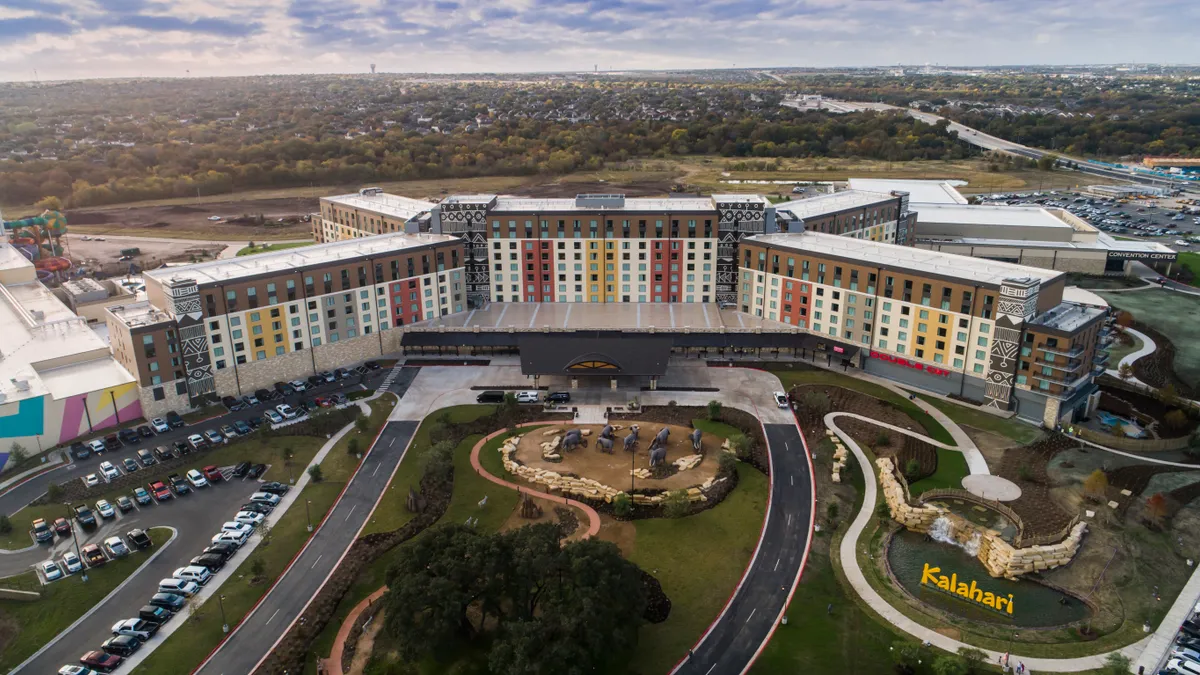The Kalahari Resort & Convention Center completed November 2020 in an Austin, Texas, suburb was a large undertaking. The 1.5 million-square-foot site and mixed-use space includes a convention center, retail area and waterpark. The technology used during the building process is no less notable.
General contractor Hensel Phelps used drone technology to keep the massive project on schedule. Software from drone technology firm Propeller facilitated the construction process, in particular by measuring and marking out the site where the resort would be.
Located on a 355-acre site, the resort itself sprawls over 152 acres, with its tallest building being 11 stories tall, according to Hensel Phelps. It features 975 guest rooms, along with a 200,000-square-foot convention center that serves as the anchor of the resort. There's also 10,000 square feet of retail space, 4,000 parking spots and the world's largest indoor waterpark, at 223,000 square feet. The value of the contract was $387 million.
The entire construction process took 30 months, in part due to the drones that kept the project on schedule.
Flying high
The typical surveying method requires a team to conduct measurements throughout the jobsite at set intervals. This can be time consuming and tedious, especially for a project that's 1.5 million square feet.
With drones, however, that isn't as much of a problem.
"As you're covering a really massive area, like 350 acres, that would take an enormous amount of time, if you were trying to cover the whole thing in that type of grid," said John Frost, the vice president of business development at Propeller. "But with a drone, you can, in an hour, achieve a much greater level of coverage, because you don't get a point every 25 feet, you get points every centimeter or two or every couple inches."
Frost said that everything that is measured with drones is far more detailed than any hand measured data, which he called a "major advantage."
The drones on the Kalahari project, said Frost, were pre-programmed with flight paths and were capable of conducting the surveys on their own, flying along these set routes and returning to a specific location once they were done. All the handlers needed to do was program the paths and collect the drones once the work was done.
The construction drone market has seen growth even through the COVID-19 pandemic and supply chain bottlenecks. Construction technology funding has seen record highs this past year, and drone companies got in on the funding. For example, construction drone tech firm Skyfish raised $20 million in seed funding this summer.
Frost was adamant that drones will become commonplace in the future for surveyors in construction.
"I believe that we'll get into a world where every surveyor and everyone tasked with the surveying tasks, measuring things, will have a drone in the back of their truck," Frost said.














